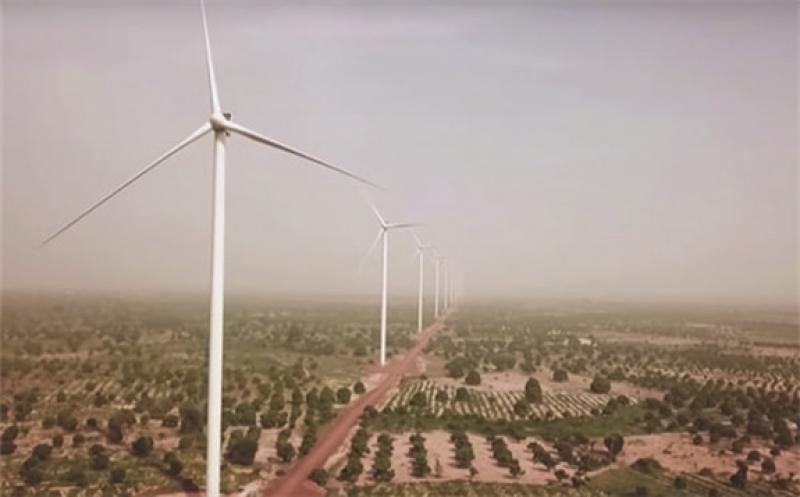Senegal is among the African nations trying to increase access to electricity for its population. U.S. officials estimate about 35% of the country’s 16 million people do not have access to power. The country’s strategy to increase power generation includes a focus on renewable resources in an effort to reduce dependence on fossil fuels. Senegal in 2017 introduced its “Plan for an Emerging Senegal,” or PES, proposing a goal of 20% of the country’s energy mix coming from renewable sources. Senegal on Feb. 24 inaugurated the first large-scale wind farm in West Africa, a facility (Figure 1) that will supply almost one-sixth of the country’s power when it reaches full capacity later this year. The country at present has about 1 GW of power generation capacity, mostly thermal generation.

President Macky Sall has made increasing renewable power generation a goal of his administration, and with the wind farm in service, Senegal will receive about 30% of its power from renewables, surpassing its stated target. “The energy mix we have today allows us to move past our dependence on petrol,” said Papa Mademba Biteye, director-general of Senelec, the national electricity company, at an inauguration ceremony for the wind farm in the rural community of Taiba N’Diaye. Lekela, a UK-based renewable energy company, built the 158-MW wind farm, located about 86 kilometers from the capital Dakar. The company also has wind installations in Egypt and South Africa, and another under construction in Ghana.
Wind power is not as prevalent as solar power in sub-Saharan Africa, as wind farms take longer to build, and cost more to construct. Senegal brought its first solar plant online in 2017, and has since added several installations, with more than 200 MW of capacity in operation. Recent projects are part of the Scaling Solar program overseen by the World Bank, an initiative that looks to create viable markets for solar power in developing countries.
The first wind power project includes 46 turbines, with one-third in operation as of last month and the rest set to come online in the next two months. Officials have said they expect the wind farm, which was built in 24 months according to Sall, will operate for at least the next 20 years. Sall on his official Twitter page called the installation “A new step in the energy market towards an emerging Senegal. Emerging Senegal, a Senegal that is fueled by its momentum through an energy mix that combines all of our potentials to ensure continuous quality service at competitive costs.” Sall’s office said the wind farm will enable at least 2 million people to gain access to electricity. His government has said its priorities include lowering the cost of power generation by reducing dependence on imported fuel and increasing electricity access, particularly in rural areas, where less than half of residents have access to power.